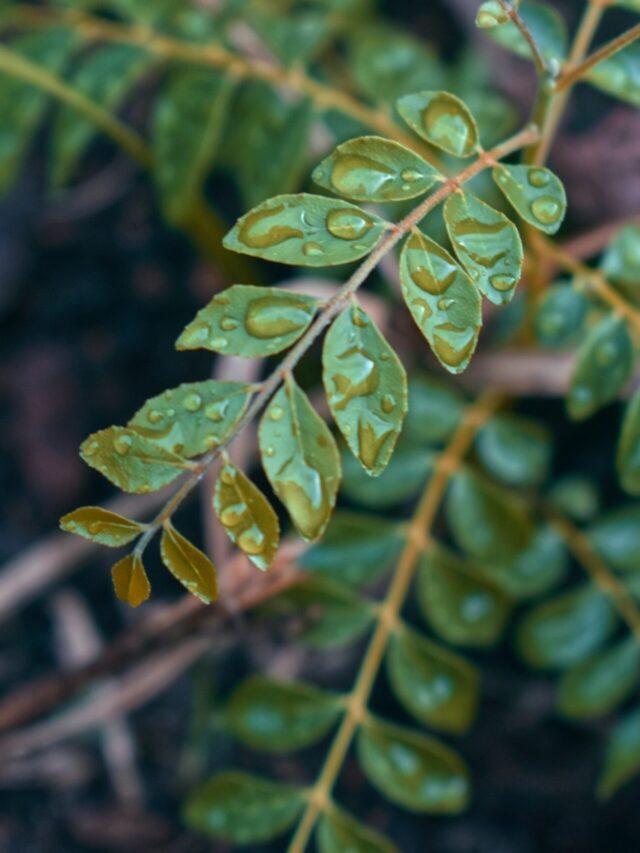Understanding the Reasons Behind a Curry Leaf Plant Not Growing
Murraya koenigii, called curry leaf, is a small, tropical to sub-tropical tree or shrub that typically grows to 6-15′ tall and is noted for its pungent, aromatic, curry leaves which are an important flavoring used in Indian/Asian cuisine.
If you have a curry leaf plant that is not growing as expected, it can be frustrating. Curry leaves are an essential ingredient in many Indian dishes, and having your own plant can be a convenient and cost-effective way to have a fresh supply. However, there are several factors that can contribute to a curry leaf plant not growing as it should. In this article, we will explore some common reasons and possible solutions to help you revive your curry leaf plant.
1. Lack of Adequate Sunlight
Curry leaf plants require plenty of sunlight to grow and thrive. If your plant is not receiving enough sunlight, it may struggle to grow. Ideally, curry leaf plants should be placed in a location where they can receive at least 6-8 hours of direct sunlight each day. If your plant is indoors, consider placing it near a sunny window or using artificial grow lights to supplement the light.
2. Improper Watering
Overwatering or underwatering can both be detrimental to the growth of a curry leaf plant. It is important to find the right balance when it comes to watering. Curry leaf plants prefer slightly moist soil, but they do not like to sit in waterlogged conditions. Ensure that the soil is well-draining and allow the top inch of soil to dry out before watering again. Additionally, avoid using chlorinated water, as curry leaf plants are sensitive to chemicals. Collect rainwater or use filtered water instead.
3. Inadequate Nutrients
A lack of nutrients can also hinder the growth of a curry leaf plant. These plants require regular feeding with a balanced fertilizer to ensure healthy growth. Choose a fertilizer that is specifically formulated for edible plants and follow the instructions on the packaging for application rates. Organic options, such as compost or well-rotted manure, can also be beneficial for providing essential nutrients to the soil.
4. Pests and Diseases
Pests and diseases can weaken a curry leaf plant and prevent it from growing properly. Common pests that affect curry leaf plants include aphids, mealybugs, and spider mites. Regularly inspect your plant for any signs of infestation, such as yellowing leaves, sticky residue, or visible pests. If you notice any issues, treat the plant with an appropriate insecticidal soap or consult a professional for guidance.
5. Unsuitable Temperature and Humidity
Curry leaf plants thrive in warm and humid conditions. If the temperature drops below 50°F (10°C), the plant may experience stunted growth or even die. Similarly, low humidity levels can cause the leaves to dry out and hinder growth. Consider placing a tray of water near the plant or using a humidifier to increase humidity levels. Avoid placing the plant near drafts or air conditioning vents.
6. Root Bound Plant
If your curry leaf plant has been in the same pot for a long time, it may become root bound. This means that the roots have filled up the pot, leaving little room for growth. When a plant becomes root bound, it can struggle to absorb nutrients and water effectively. To remedy this, carefully remove the plant from its pot and gently loosen the roots. Repot the plant in a slightly larger container with fresh, well-draining soil.
7. Pinchbeck and Prune Plant
Cultivating a flourishing curry leaf plant is a rewarding endeavor, and to maximize its yield, it is crucial to adopt attentive care, especially during the early stages of growth. Pinching and pruning the young curry leaf plant is a recommended practice, as it encourages the development of a robust and multi-branched structure. By delicately removing the top growth and excess shoots, you guide the plant’s energy towards lateral branching, resulting in a fuller and more compact form. This intentional shaping not only enhances the aesthetic appeal of the curry leaf plant but also ensures a higher leaf count, ultimately leading to a more abundant harvest. Taking the time to pinch and prune during the plant’s youth sets the foundation for a thriving and productive curry leaf plant, providing you with an ample supply of aromatic leaves for culinary use. (Click here to see the Video)
Conclusion
A curry leaf plant not growing can be disheartening, but with the right care and attention, you can revive it. Ensure that your plant receives adequate sunlight, proper watering, and sufficient nutrients. Keep an eye out for pests and diseases, and maintain suitable temperature and humidity levels. If your plant is root bound, repot it in a larger container. By addressing these common issues, you can encourage healthy growth and enjoy a thriving curry leaf plant in your home.
Remember to check out the
Best Soil for Curry Leaf Plant,
Best Indoor Grow Lights,
Sharp Pruning Shears, and
Best Fertilizer
on Amazon to give your curry leaf plant the care it deserves. Don’t miss our helpful pruning guide on YouTube:
Automate care for your curry leaf plant, even on vacation. :
1. Essential Tools: Essential Pruning Tools
2. Outdoor Smart Plug Wi-Fi Outlet Timer: Outdoor Smart Plug Wi-Fi Outlet Timer
3. Small Submersible Pump: Small Submersible Pump
4. Garden Watering Tube Line: Garden Watering Tube Line
5. Air Layering Ball Can’t 3D-Print: Air Layering Ball
6. Last Item on the list while you work on your garden. Best Head Phones
Happy Gardening !.

Hey everyone, giving 555win55.info a shot. The interface is slick! Let’s see if lady luck is on my side tonight! Give it a whirl: 555win55
Bro, Phnicecasino is where the action’s at. They have a solid selection of games and the site’s easy to navigate. Definitely worth a look at phnicecasino.